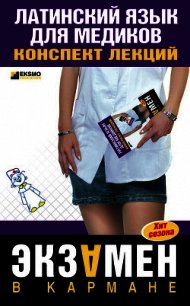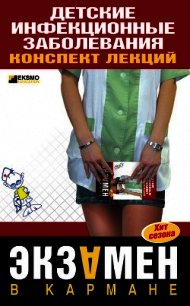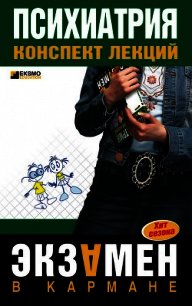Английский язык для медиков: конспект лекций - Беликова Елена (книги хорошем качестве бесплатно без регистрации .txt) 📗
ЛЕКЦИЯ № 22. Lungs
Intrapulmonary bronchi: the primary bronchi give rise to three main branches in the right lung and two branches in the left lung, each of which supply a pulmonary lobe. These lobar bronchi divide repeatedly to give rise to bronchioles.
Mucosa consists of the typical respiratory epithelium and an underlying lamina propria similar to that of the trachea. However, a layer of loosely woven smooth muscle (muscularis mucosae), which separates the lamina propria from the submucosa, is present.
Submucosa consists of elastic tissue with fewer mixed glands than seen in the trachea.
Anastomosing cartilage plates replace the C-shaped rings found in the trachea and extra pulmonary portions of the pri mary bronchi. These plates become progressively smaller asairway diameter decreases.
Bronchioles do not possess cartilage, glands, or lymphatic nodules; however, they contain the highest proportion of smooth r muscle in the bronchial tree. Bronchioles branch up to 12 times to supply lobules in the lung, which are bounded by connective tis sue septa. The smallest conducting bronchioles are called terminal bronchioles.
Bronchioles are lined by ciliated, simple, columnar epithelium with nonciliated bronchiolar (Clara) cells. Goblet cells are pre sent in large bronchioles. A smooth muscle layer interlaces the elastic fibers of the lamina propria. The musculature of the bronchi and bronchioles con tracts following stimulation by parasympathetic fibers (vagus nerve) and relaxes in response to sympathetic fibers. Terminal bronchioles consist of low-ciliated epithelium with bronchiolar cells.
The costal surface is a large convex area related to the inner surface of the ribs.
The mediastinal surface is a concave medial surface.
The left lung has a deep cardiac impression.
The mediastinal surface contains the root, or hilus, of the lung.
The pulmonary ligament is a double fold of pleura hanging inferior to the root of the lung.
The diaphragmatic surface (base) is related to the convex sur face of the diaphragm. It is more concave on the right due to the presence of the liver. The apex (cupola) protrudes into the root of the neck. It is crossed by the subclavian artery anteriorly.
The hilus is the point of attachment for the root of the lung. It contains the bronchi, pulmonary and bronchial vessels, lym phatics, and nerves. Lobes and fissures.
The right lung is divided by the oblique and horizontal fissures into three lobes: superior, middle and inferior.
The left lung has only one fissure, the oblique, which divides the lung into upper and lower lobes. The lingula of the upper lobe corresponds to the middle lobe of the right lung.
Bronchopulmonary segments of the lung are supplied by the seg-mental (tertiary) bronchus, artery, and vein. There are 10 on the right and 8 on the left.
Arterial supply: Right and left pulmonary arteries arise from the pulmonary trunk. The pulmonary arteries deliver deoxygenated blood to the lungs from the right side of the heart.
Bronchial arteries supply the bronchi and nonrespiratory por tions of the lung. They are usually branches of the thoracic aorta.
Venous drainage. There are four pulmonary veins: superior right and left and inferior right and left. Pulmonary veins carry oxygenated biblood to the left atrium of the heart.
The bronchial veins drain to the azygos system. They share drainage from the bronchi with the pulmonary veins.
Lymphatic drainage: Superficial drainage is to the bronchopulmo-nary nodes; from there, drainage is to the tracheobronchial nodes.
Deep drainage is to the pulmonary nodes; from there, drainage is to the bronchopulmonary nodes.
Bronchomediastinal lymph trunks drain to the right lymphatic duct and the thoracic duct.
Innervation of Lungs: Anterior and posterior pulmonary plexuses are formed by vagal (parasympathetic) and sympathetic fibers. Para-sympathetic stimulation has a bronchoconstrictive effect. Sympathetic stimulation has a bronchodilator effect.
New words
lungs – легкие
intrapulmonary bronchi – внутрилегочные бронхи
the primary bronchi – первичные бронхи
to give – давать
to rise – повышать
lobar bronchi – долевые бронхи
to divide – разделять
repeatedly – неоднократно
loosely – свободно
woven – сотканный
smooth – гладкий
submucosa – подслизистая оболочка
costal – реберный
surface – поверхность
onvex – выпуклый
apex – вершина
to protrude – высовываеться
superior – выше
right – право
left – оставленный
inferior – низший
innervation – иннервация
Образование множественного числа существительных:
a cat – cats
a dog – dogs
а саr – cars
a watch – watches
a dress – dresses
a dish – dishes
a box – boxes
a potato – potetos
Запомните форму множественного числа следующих существительных:
a goose – geese
a tooth – teeth
a foot – feet
an ox – oxen
a man – men
a woman – women
a child – children
a mouse – mice
А также:
an englishman – englishmen
a frenchman – frenchmen
a german – germans
Существуют существительные, имеющие во множественном числе ту же форму, что и в единственном:
a sheep – sheep
a deer – deer
a swine – swine
Поставьте следующие существительные во множественное число.
A park, a play, a table, a plate, a fox, a room, a lady, a knife, a hair, a bus, a match, a way, a house, a family, a flag, a town, a wolf, a country, a lion, a star, a mountain, a tree, a shilling, a king, the waiter, the queen, a man, the man, a woman, the woman, an eye, a shelf, a box, the city, a boy, a goose, the watch, a mouse, a dress, a toy, the sheet, a tooth, a child, the ox, a deer, the life, a tomato.
This tea-cup, this egg, that wall, that picture, this foot, that mountain, this lady, that window, this man, that match, this knife.
Answer the questions.
1. What do the primary bronchi give?
2. For how many main branches in the right lung give primary bronchi rise?
3. For how many main branches in the left lung give primary bronchi rise?
4. What for lobar bronchi divide repeatedly?
5. What does mucosa consist of?
6. What is submucosa consist of?
7. What lung has a deep cardiac impression?
8. Where is the diaphragmatic surface (base) related?
9. How many pulmonary veins are there?
10. How are anterior and posterior pulmonary plexuses formed by?
Make the sentences of your own using the new words (10 sentences).
Find the definite and indefinite articles in the text.




